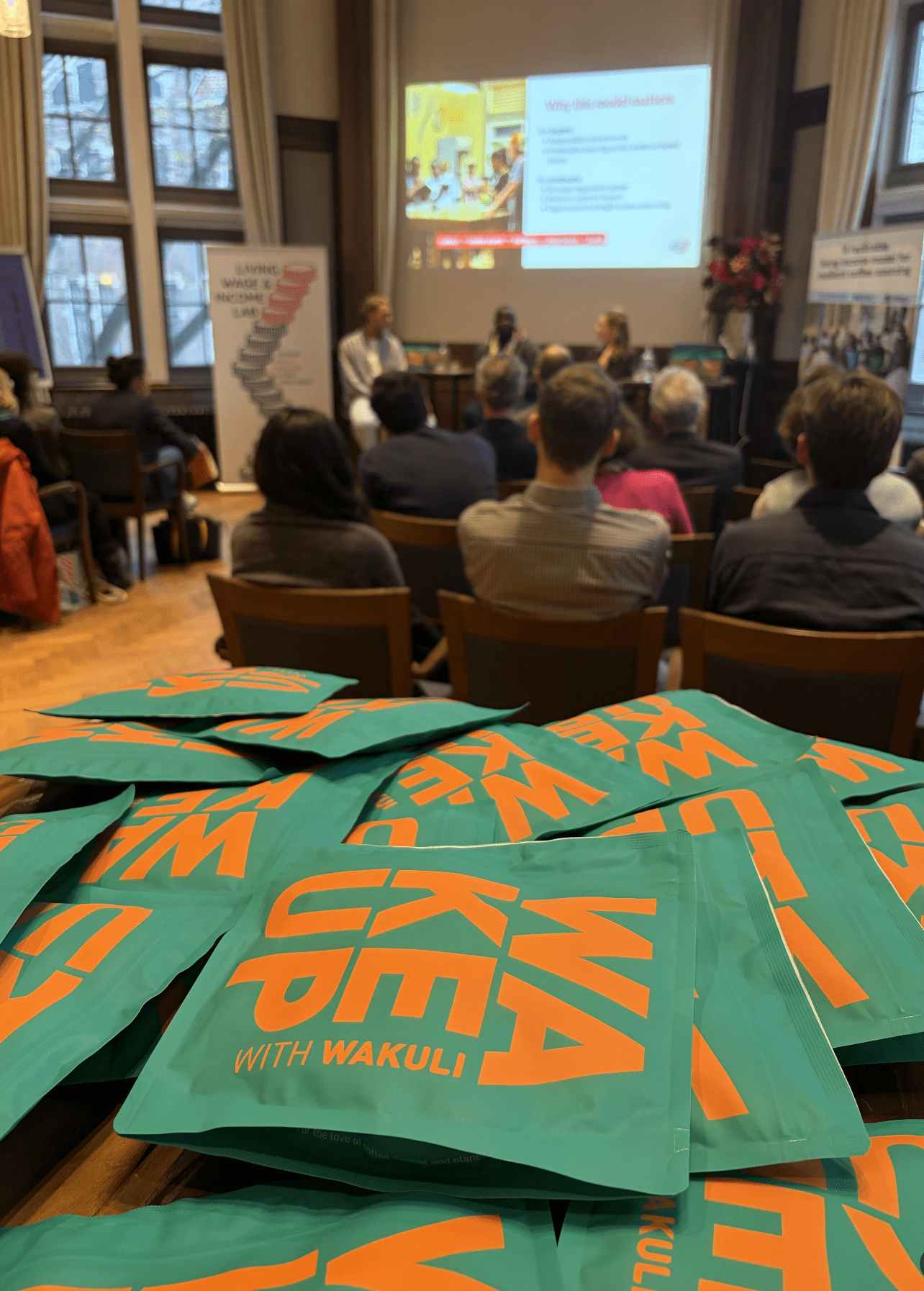The participants of the Living Wage Lab want to ensure a living wage for all nodes in their supply chain. But how can you reach that goal when you don’t own the farm or factory from which you source and you are not their only customer? With Fairphone as an example, this was the topic of the 13th Living Wage Lab, which took place in Utrecht on 13 November.
Fairphone’s living wage case
Fairphone was launched in 2013 with the aim to create a phone with a positive social and environmental impact: a fair phone. This includes a long-lasting design made out of fair materials, assembled under good working conditions and recyclable. They have demonstrated that it is possible to create fair products. But they also face some challenges. The factory from which they source supplies also to other customers, which complicates implementing a living wage. How can Fairphone pay out a living wage if they only buy 10 percent of the produce? The Living Wage Lab is a perfect platform to brainstorm on solutions with a variety of stakeholders.

Possible solutions
During the Lab, small working groups discussed a number of options, one of which was to pay out the living wage to employees that work on a Fairphone production line. Only these workers will receive a living wage. Participants agreed quickly that this would lead to chaos in the factory. In order to avoid this, workers could be rotated; this way, everybody will have a chance to work on the higher-paid production line. The downside is that workers only receive a living wage one month a year. Another idea to prevent chaos was to create a loyalty pool: people who have worked longer in the factory get the opportunity to work on the production line. Employees could also be selected for Fairphone’s production line on the basis of their work efficiency. This would require extra investments in a monitoring system, but could also promote efficiency at factory level.
Other groups worked out options to use the money of the living wage in a way to benefit all employees of the factory. Notably, many groups discussed the possibilities of providing in-kind solutions such as day care, providing food and subsidy on rent. This was specifically suggested if the pay rise per person would be so small that in-kind investment would make more sense. Such provisions could improve the life of all the workers in the factory.
Also the importance of a sector wide approach came to the fore. That is after all the most long-lasting solution; facilitating a social dialogue and getting the workers involved. The participants of the Lab, who see Fairphone as a front-runner with an exemplary position, suggested that Fairphone starts a dialogue to see if they can share the costs of living wages with other companies. Remco reacted however that this was already tried, with no end, unfortunately.
Complicating factors in this case were that many employees choose to work overtime, because they get paid an extra 50 or 100 percent, while a living wage should be earned for a workweek of 48 hours. Also many employees are migrants, who want to work as much as they can and send money home. The question that rose was: how can you prevent the employees from working more than 48 hours?
Agri-food perspective
Buyers in other sectors face challenges in working with their suppliers as well. Evert-Jan Verschuren from Verstegen Spices & Sauces BV illustrated their sourcing strategy in Asia. The difficulty for Verstegen is that their suppliers buy from many collectors and farmers since most of them are smallholders. It can be difficult to get information on the farmers from which their suppliers buy. Therefore, they prefer to create long-term commitments with suppliers and select suppliers with similar values.
Verstegen has several projects to improve the livelihood of farmers and quality of their spice supply. SpiceUp targets to support pepper farmers in Indonesia by geodata and together with Fairfood, Verstegen targets to support nutmeg farmers by tracking the journey and prices traded by blockchain technology.
The way forward
The day had been inspirational for the participants. The case of Fairphone showed that it is easy to talk about living wages, but that the actual paying-out involves many challenges. The group work provided an opportunity to discuss challenges on a very practical level of implementation.
The discussions brought up a lot of food for thought. Remco will keep the group updated on the developments. Several Lab members expressed interest to continue to provide input on the topic to come up with practical solutions together. If you would like to join this discussions, please sign up by sending an email to info@livingwagelab.org.


